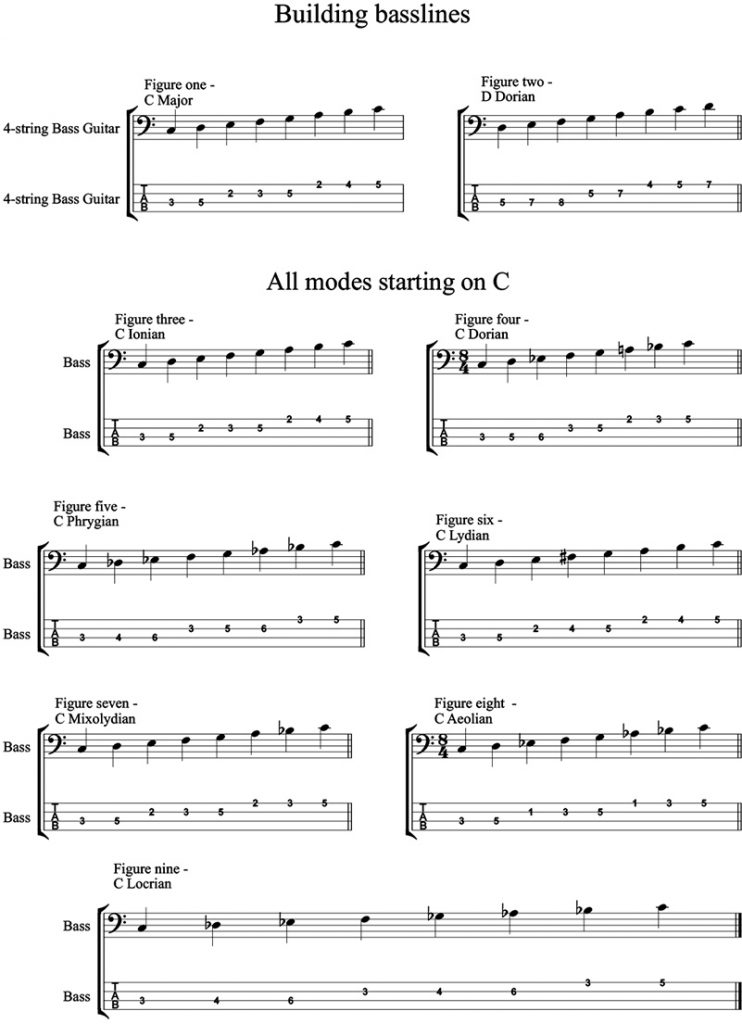Deep Thinking: Building Basslines
Deep Thinking: Building Basslines
In this instalment of Deep Thinking we are looking at a way you can use different scales when confronted (or even challenged!) with some previously unheard music or a new song.
As bass players, what’s expected of us is a combination of solid groove and a harmonic link between the drums/percussion and the instruments above us in higher registers (guitars/keys etc.). So, what can we do when a song is completely outside our comfort zone or is completely uninspiring(!)? This column’s title in full is ‘building basslines when you are faced with a new song’.
It will hopefully be something you like, and written by someone in the band whose music you respect, so let’s look at it that way! In my experience as a studio musician music usually came in three ways: notated (no problem, just read what the composer wants); a chord chart (much easier and you have the luxury of putting your own ideas in); or learning by ear (harder if the composer doesn’t know the names of the chords he/she has used and it takes longer if you are in a studio and someone is paying).
What I have done below is use a C major scale (C,D,E,F,G,A,B,C). It is also known as C Ionian for our purposes in this column. If you start the scale, keeping all the same notes, on each of its steps, as in figures 1 and 2, we get very different characteristics, or colours, just by changing where you start.
For example, figure 2 is D Dorian and has all the C Ionian notes but just starts on D and goes up to D octave. This is a very useful scale when used with a Dmin7 chord in jazz or funk. Just use the root, minor third, fifth and flat seven for a simple riff. Adding the sixth rising to the seventh is very effective. These are just two examples. Below, for the sake of easiness, I have written all of the combinations of scales, or modes to give them their correct names, with each starting on the note C.
Have a go at the fingerings, they are quite easy, and then look at the list of chord types below that they can be used with. Remember that all 12 keys have eight modes leading from the standard (major) scale root note. They are also known as diatonic modes. There is another set built from the melodic minor scale but we will look at those in another issue.
Below are a few possible chords for each modal scale (there are many more).
- C Ionian – C major, C6, C major 7, C add 9
- C Dorian – Cm6, Cm7, Cm9, Cm11, Cm13 (good for funk and jazz)
- C Phrygian – Cm7, Cm7b9, Cmb6b9 (sounds a bit Spanish)
- C Lydian – C major, C6, C major 7, C major 7 #4 (great in jazz/fusion IMHO)
- C Mixolydian – C major, C7, C9, C11, C13 (useful in blues, jazz, rock and roll and just about any song with a ‘7’ chord)
- C Aeolian – C minor, Cmb6, Cm7, Cm7/9 (standard natural minor scale)
- C Locrian – Cm7b5 (useful substitute chord for a standard ‘7’ chord)
I hope that all works in prompting some useful bassline ideas. Use as many or as few notes from each scale as you think necessary. Good luck!
Dr. Rob Burns is an Honorary Associate Professor in Music at the University of Otago in Dunedin. As a former professional studio bassist in the UK, he performed and recorded with David Gilmour, Pete Townsend, Jerry Donahue, Isaac Hayes, James Burton, Ian Paice and Jon Lord, Eric Burdon and members of Abba. Rob is currently a member of Dunedin band The Verlaines and is on three new progressive rock albums released in the UK since 2020. Seelie Court Records (UK) has an album Rob played on when he was 16, with others, including a live album, also available.

